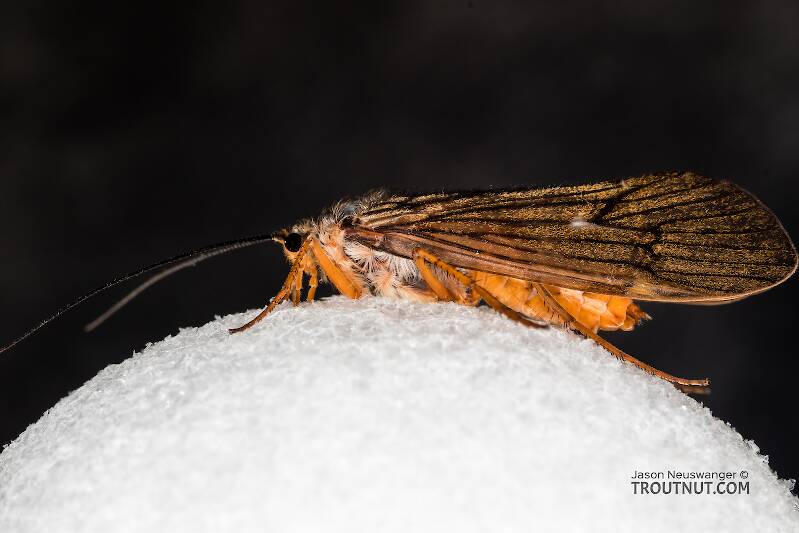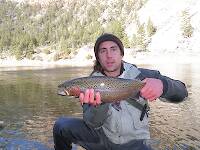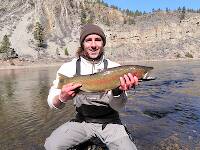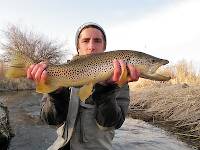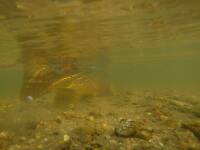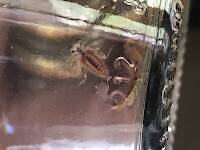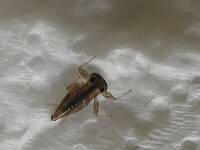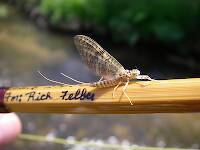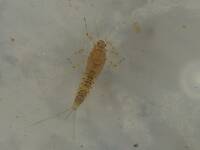
Hex Mayflies
Hexagenia limbata
The famous nocturnal Hex hatch of the Midwest (and a few other lucky locations) stirs to the surface mythically large brown trout that only touch streamers for the rest of the year.
Featured on the forum

This is an interesting one. Following the keys in Merritt R.W., Cummins, K.W., and Berg, M.B. (2019) and Jacobus et al. (2014), it keys clearly to Ephemerella. Jacobus et al provide a key to species, but some of the characteristics are tricky to interpret without illustrations. If I didn't make any mistakes, this one keys to Ephemerella mucronata, which has not previously been reported any closer to here than Montana and Alberta. The main character seems to fit well: "Abdominal terga with prominent, paired, subparallel, spiculate ridges." Several illustrations or descriptions of this holarctic species from the US and Europe seem to match, including the body length, tarsal claws and denticles, labial palp, and gill shapes. These sources include including Richard Allen's original description of this species in North America under the now-defunct name E. moffatae in Allen RK (1977) and the figures in this description of the species in Italy.

Troutnut is a project started in 2003 by salmonid ecologist Jason "Troutnut" Neuswanger to help anglers and
fly tyers unabashedly embrace the entomological side of the sport. Learn more about Troutnut or
support the project for an enhanced experience here.
This topic is about the Insect Order Trichoptera
Some say caddisflies are even more important than mayflies, and they are probably right. The angling world has taken a while to come to terms with this blasphemy. Caddis imitations are close to receiving their fare share of time on the end of the tippet, but too many anglers still assume all caddisflies are pretty much the same.Caddis species actually provide as much incentive to learn their specifics as the mayflies do. There is just as much variety in their emergence and egg-laying behaviors, and as many patterns and techniques are needed to match them. Anglers are hampered only by the relative lack of information about caddisfly behavior and identification.
Example specimens
Deke
Posts: 4
Posts: 4
Deke on Aug 20, 2009August 20th, 2009, 1:25 pm EDT
i was fossil hunting and came across these i live in west tn,i tohught it was a fossil at first then relized its really small pebbles and relized it was some sort of a cacoon ,wondering what can build this i put them in my aquarium for the night as they are crawling ill put them back tommorow.very interesting creatures i have never seen anyhting like this in my creek all my life thought i was on a endagered species hehe.and im pretty sure this is what they are now that i found your site but what is odd is there is no trout in my creek its on the small size and they was only 3 under this rock each about a inch long. they are not to my knowledge at all in the main creek with crawfish's and minnow's i dont have no plankton for them to eat i threw grass in there and spring water it probably has some and a piece of a sardine know that i know they can fly i do not wish to keep them also hehe but they are cute"in a manly way"
Quick Reply
Related Discussions
Topic
Replies
Last Reply
1
Aug 9, 2012
by Sayfu
by Sayfu


